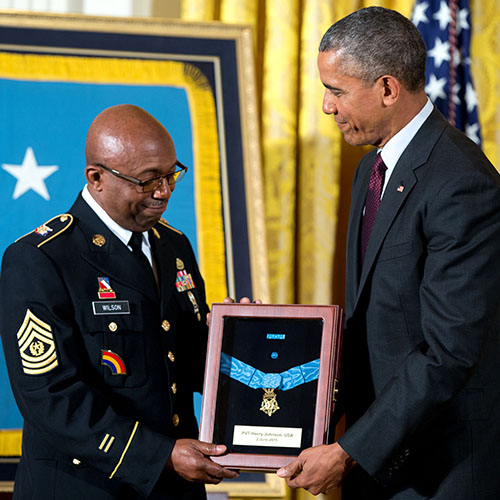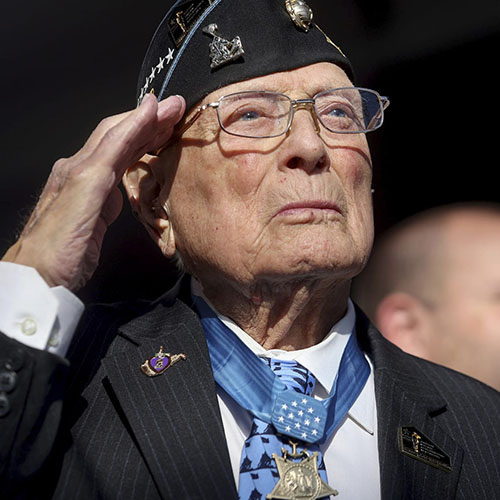THE DESIGN
Since its creation during the American Civil War, the Medal of Honor has undergone several design changes. The U.S. Army and U.S. Navy have always had separate designs for their personnel. Until the U.S. Air Force introduced its design in 1965, all airmen received the Army design. The U.S. Marine Corps and U.S. Coast Guard receive the U.S. Navy design.
In 1919, the Navy experimented with a second Navy design, known as the “Tiffany Cross,” to be bestowed on Naval personnel whose actions took place during armed conflict. Individuals whose actions did not take place during combat received the original star design. This two-design system created confusion and the Tiffany Cross design was not widely issued.

AWARDING THE MEDAL
The standards to award the Medal of Honor have evolved over time, but the Medal has always stood for actions that go above and beyond. The current criteria were established in 1963 during the Vietnam War.
All recommendations require thorough reports on the act itself, the battlefield and its setting; at least two sworn eyewitness statements; and any other compelling evidence that can be gathered. Recommendation packets must be approved all the way up the military command structure, ending with the United States President as the Commander-in-Chief.

REQUIREMENTS TO BE AWARDED
The Medal is authorized for any military service member who “distinguishes himself conspicuously by gallantry and intrepidity at the risk of his life above and beyond the call of duty
- While engaged in an action against an enemy of the United States;
- While engaged in military operations involving conflict with an opposing foreign force; or
- While serving with friendly foreign forces engaged in an armed conflict against an opposing armed force in which the United States is not a belligerent party."
